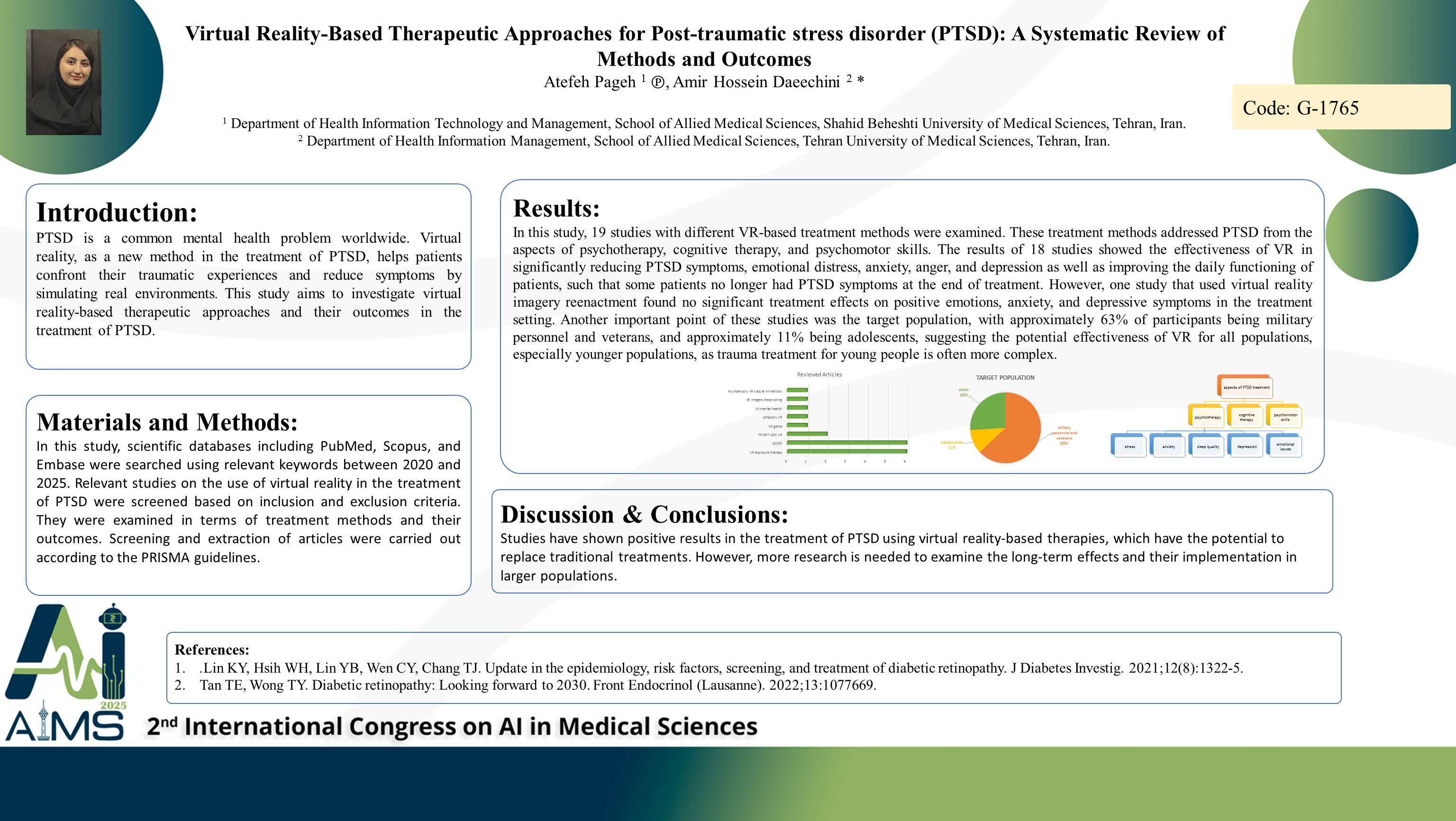Virtual Reality-Based Therapeutic Approaches for Post-traumatic stress disorder (PTSD): A Systematic Review of Methods and Outcomes
Code: G-1765
Authors: Atefeh Pagheh ℗, Amir Hossein Daeechini *
Schedule: Not Scheduled!
Tag: Robotics in Surgery and Care
Download: Download Poster
Abstract:
Abstract
Background and aims: PTSD is a common mental health problem worldwide. Virtual reality, as a new method in the treatment of PTSD, helps patients confront their traumatic experiences and reduce symptoms by simulating real environments. This study aims to investigate virtual reality-based therapeutic approaches and their outcomes in the treatment of PTSD. Methods: In this study, scientific databases including PubMed, Scopus, and Embase were searched using relevant keywords between 2020 and 2025. Relevant studies on the use of virtual reality in the treatment of PTSD were screened based on inclusion and exclusion criteria. They were examined in terms of treatment methods and their outcomes. Screening and extraction of articles were carried out according to the PRISMA guidelines. Results: In this study, 19 studies with different VR-based treatment methods were examined. Treatment methods include: VR exposure therapy (n=6), 3MDR (n=6), TF-CBT with VR (n=2), VR game (n=1), olfactory VR (n=1), VR mental health (n=1), VR Imagery Rescripting (n=1), multisensory VR nature immersion (n=1). These treatment methods addressed PTSD from the aspects of psychotherapy (anxiety, stress, depression, sleep quality, and emotional issues), cognitive therapy, and psychomotor skills. The results of 18 studies showed the effectiveness of VR in significantly reducing PTSD symptoms, emotional distress, anxiety, anger, and depression as well as improving the daily functioning of patients, such that some patients no longer had PTSD symptoms at the end of treatment. However, one study that used virtual reality imagery reenactment found no significant treatment effects on positive emotions, anxiety, and depressive symptoms in the treatment setting. Another important point of these studies was the target population, with approximately 63% of participants being military personnel and veterans, and approximately 11% being adolescents, suggesting the potential effectiveness of VR for all populations, especially younger populations, as trauma treatment for young people is often more complex. Conclusion: Studies have shown positive results in the treatment of PTSD using virtual reality-based therapies, which have the potential to replace traditional treatments. However, more research is needed to examine the long-term effects and their implementation in larger populations.
Keywords
Virtual Reality, PTSD, 3MDR, VERT
